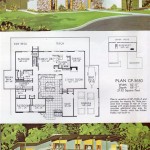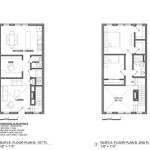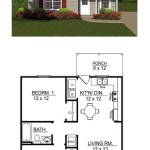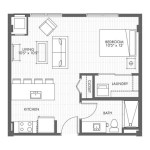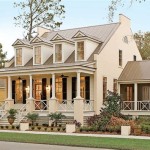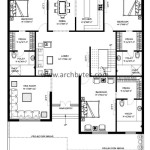Pool House Plans With Barrier Considerations
The integration of a pool house into a residential landscape offers a multitude of benefits, functioning as a recreational hub, storage solution, and potentially a guesthouse. However, the presence of a swimming pool introduces specific safety concerns, principally concerning the potential for accidental drowning, especially among young children. Consequently, pool house plans must comprehensively address barrier requirements to mitigate these risks and comply with local regulations.
This article will explore the critical elements of pool house plans that incorporate robust barrier systems, detailing the various barrier options, design considerations, and regulatory compliance aspects. The goal is to provide information that assists homeowners and architects in creating pool areas that are both aesthetically pleasing and exceptionally safe.
Understanding the Importance of Pool Barriers
The primary objective of a pool barrier is to prevent unsupervised access to the pool area, particularly by infants and toddlers. Data consistently demonstrates that a significant proportion of drowning incidents involving young children occur due to lapses in supervision and unrestricted access to the pool. Pool barriers serve as a crucial layer of protection, providing a physical impediment that delays or prevents unsupervised entry.
Effective pool barriers are not merely an afterthought; they are integral to the overall design of the pool area and the pool house. Properly integrated barriers enhance the aesthetic appeal while simultaneously ensuring that safety remains paramount. Neglecting barrier requirements can have devastating consequences, leading to tragic accidents and potential legal liabilities.
Furthermore, adherence to local and national building codes regarding pool barriers is mandatory. These codes are designed to establish minimum safety standards and vary depending on the jurisdiction. Homeowners must familiarize themselves with these regulations before commencing any pool or pool house construction project.
Types of Pool Barriers and Their Integration with Pool House Designs
Several types of pool barriers can be effectively integrated into pool house plans. Each type offers unique advantages and disadvantages in terms of cost, aesthetics, and ease of installation. The selection process should be guided by a thorough assessment of individual needs, site conditions, and budgetary constraints.
Fencing: Fencing is a common and widely accepted pool barrier solution. Fences must meet specific height requirements, typically a minimum of 4 feet (1.2 meters) tall, to prevent children from climbing over them. The spacing between vertical members must be narrow enough to prevent a child from squeezing through, generally less than 4 inches (10 centimeters). Chain-link, wrought iron, aluminum, and wood are frequently used fencing materials, each offering varying degrees of durability and aesthetic appeal. When incorporating fencing into a pool house plan, consider the following:
- Gate Design: Gates must be self-closing and self-latching. The latch should be positioned high enough to be out of reach of young children or designed to be inaccessible to them. Self-closing hinges and reliable latching mechanisms are essential to ensure the gate automatically closes and secures after each use.
- Fence Placement: The fence should completely surround the pool area, isolating it from the rest of the yard. Avoid gaps beneath the fence that could allow a child to crawl underneath. The fence should be installed on stable ground and properly anchored to prevent leaning or collapse.
- Integration with Pool House Structure: The fence can be seamlessly integrated with the pool house structure, creating a cohesive design. For example, the fence can connect directly to the walls of the pool house, eliminating potential access points.
Pool Covers: Automatic or manually operated pool covers offer another layer of protection. These covers are designed to completely cover the pool surface when it is not in use, preventing access to the water. While pool covers can be effective, they should not be considered a substitute for a physical barrier like a fence. Some key considerations for pool covers include:
- Type of Cover: Automatic pool covers are typically more expensive but offer greater convenience and ease of use. Manual covers require more effort to deploy and retract but are a more cost-effective option.
- Strength and Durability: The cover must be strong enough to support the weight of a child or adult who might accidentally walk onto it. Look for covers that meet safety standards and are made from durable materials that can withstand the elements.
- Maintenance: Pool covers require regular maintenance to ensure they function properly. Keep the cover clean and free of debris, and inspect it regularly for damage.
Safety Nets: Safety nets are another form of pool barrier that can be deployed over the pool surface. These nets are typically made of durable mesh and are anchored securely to the pool deck. Like pool covers, safety nets should not be relied upon as the sole barrier but can provide an additional layer of protection. Points to consider when using safety nets include:
- Mesh Size: The mesh size must be small enough to prevent a child from slipping through.
- Anchoring System: The anchoring system must be robust enough to withstand the weight of a child or adult.
- Installation and Removal: The net should be easy to install and remove for pool use.
Natural Barriers: In some cases, natural barriers such as dense hedges or vegetation can be used in conjunction with other barrier methods. However, these barriers must be carefully selected and maintained to ensure they provide adequate protection. Hedges must be dense enough to prevent a child from crawling through, and they must be kept trimmed to maintain their effectiveness.
Design Considerations for Pool House Plans with Barriers
The design of the pool house should complement the barrier system, creating a cohesive and aesthetically pleasing environment. Here are some key design considerations:
Visibility: Maintaining clear visibility of the pool area is crucial for effective supervision. The pool house should be positioned to allow for unobstructed views of the pool from inside the structure. Large windows and open layouts can enhance visibility. Fencing should be designed to minimize visual obstructions while still providing adequate protection.
Accessibility: While the primary goal is to restrict unauthorized access, it is also important to provide convenient access for authorized users. Gates should be strategically placed to allow for easy entry and exit from the pool area. Consider the placement of steps, pathways, and other features that facilitate access.
Material Selection: The materials used for the pool house and the barrier system should be durable, weather-resistant, and easy to maintain. Consider materials that complement the overall aesthetic of the property. For example, a wood fence can be paired with a wood-clad pool house, while a wrought iron fence can be paired with a more traditional design.
Landscaping: Landscaping can play a significant role in enhancing the safety and aesthetic appeal of the pool area. Avoid planting trees or shrubs near the fence that could be used to climb over it. Use landscaping to create natural barriers and to direct traffic away from the pool area.
Lighting: Adequate lighting is essential for nighttime safety. Install lights around the pool area and along pathways leading to the pool house. Consider using motion-activated lights to deter unauthorized access.
Alarm Systems: Pool alarms can provide an additional layer of protection by alerting homeowners when someone enters the pool area. These alarms can be installed on the pool itself or on the gates leading to the pool. Pool alarms should not be considered a substitute for a physical barrier but can provide valuable early warning.
Regulatory Compliance and Liability Considerations
Adherence to local and national building codes regarding pool barriers is not only ethically imperative but also legally mandated. Failure to comply with these regulations can result in fines, legal liabilities, and, in the worst-case scenario, tragic accidents.
Building Codes: Building codes specify the minimum requirements for pool barriers, including fence height, gate design, and spacing between fence members. These codes vary depending on the jurisdiction. It is essential to consult with local building officials to ensure that your pool house plans comply with all applicable regulations.
Permitting: Pool construction and pool house projects typically require permits from local authorities. The permitting process ensures that the project meets all applicable building codes and safety standards. Failure to obtain the necessary permits can result in delays, fines, and even the removal of the structure.
Liability: Homeowners are legally responsible for ensuring the safety of their property, including the pool area. If a child is injured or drowns in the pool due to inadequate barriers or supervision, the homeowner may be held liable. Adequate insurance coverage is essential to protect against potential liability claims.
Professional Consultation: Engaging with qualified professionals, such as architects, engineers, and pool contractors, is crucial for ensuring that your pool house plans are safe, compliant, and aesthetically pleasing. These professionals can provide expert guidance on barrier selection, design considerations, and regulatory compliance.
In summary, integrating a robust barrier system into pool house plans is paramount for ensuring the safety of children and preventing accidental drownings. By carefully considering the various barrier options, design considerations, and regulatory requirements, homeowners can create pool areas that are both beautiful and exceptionally safe. Vigilance and proper planning are essential when constructing a pool house to prevent accidents.

Pool House Plans Plan With Bar Grill 062p 0006 At Www Theprojectplan Com

Pool House Plans And Designs

4 Stunning Pool House With Bar And Bathroom Plans Blog Eplans Com

Pool House Plan Meyers

Pool House Plans With Vaulted Lanai 062p 0007 At Www Theprojectplan Com

How To Ensure The Pool Landscaping Matches Your House Design Barrier Reef Pools

Modern Pool House Plan With A Bar And Covered Patio Harmon

Pool House With Half Bath And Cover Bar Area 68959vr Architectural Designs Plans

New House Plans Why A Swimming Pool Should Be On Top Of Your List Barrier Reef Pools

Modern Pool House Plan With A Bar And Covered Patio Harmon
Related Posts

